How to rightsize your company’s digital portfolio
By 2023, IDC estimates that global spending on digital transformation services and technologies will reach $2.3 trillion. The digital transformation of operations and product portfolios has become a critical differentiation strategy for companies in all sectors. Yet many companies struggle to assess the value created by their digital investments. As inflation pressures the bottom line and as recession looms, it is increasingly important to prioritize initiatives based on Return on Digital Investments (RODI).
We have found that many companies can reduce their investment in digital solutions by 20% while increasing aggregate value creation across the portfolio. How? Through rigorous prioritization and rightsizing of initiatives.
Evaluating digital solutions can be a difficult process since they often create value in different ways for multiple users. It requires an objective comparison of value generation against corporate priorities. This can be challenging from both perspectives. Measuring value generation requires generating systematic input from end-users and tracking KPIs. And corporate priorities are often vaguely defined and not well-aligned even among senior management.
As a result, many companies fall into an investment trap. They struggle to assess how much value their digital products generate, and decide which initiatives to scale up or down based on internal politics and campaigning by product owners.
Successful digital transformation can lead to outsized returns and long-term competitive advantages. But the portfolio of initiatives must be regularly trimmed to maintain focus.
So how, indeed, can your company rightsize its digital portfolio and improve its RODI?
Here, we look at how companies can prioritize investments by answering three questions:
- What are the corporate priorities that we seek to achieve with our digital solutions?
- How are our digital solutions actually benefiting our company?
- Where are we over-investing or under-investing in solutions, and how do we correct this?
By answering these three questions, companies can take measures to rightsize their digital transformation, leading to cost reductions in the short term and better portfolio performance in the long term.
For most companies, there are three particular challenges that contribute to difficulties in prioritizing the digital solutions with the greatest benefit.
- The interplay of digital products with the core business is complex and unclear, and the actual system users often lack a voice in solution evaluation.
- Digital value creation models are often less tangible than traditional investments and go far beyond direct revenue growth and cost reduction.
- Modern digital systems compete with traditional IT systems products for resources and attention and internal politics favor the status quo despite user dissatisfaction.
First, let’s discuss an approach that companies can use to map both their objectives for the digital portfolio and the benefits that particular products deliver - the Digital Value Canvas. This methodology was created by our partner Excubate.
.jpg)
The light blue inner circle measures the direct commercial benefits of a particular digital product, namely how much revenue a digital product generates or how much it reduces costs.
The dark blue middle ring shows indirect but quantifiable commercial benefits. The benefits extend to a variety of things that can have a quantifiable positive influence on a business, including:
- Customer satisfaction/retention
- Core product sales
- Employee effectiveness
- Process speed and quality
- Equipment utilization
Finally, the royal blue outer ring represents the goodwill and strategic benefit of a digital product. This ring can represent technology stories that increase stock market valuation, improvements to brand awareness, development of more agile culture, and other intangible but meaningful impacts.
Let’s take a look at an example of the Digital Value Canvas in action.
Below we have an example of a manufacturer that implements a solution for internal remote support:
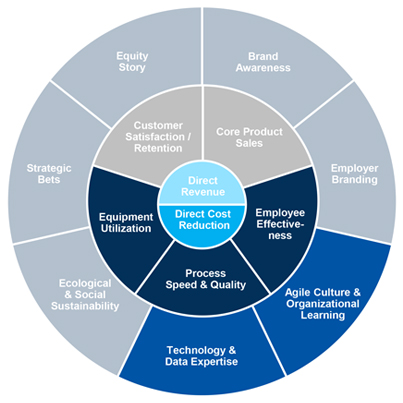
We can see that this solution creates value in each of the three rings in the Digital Value Canvas.
At the center, costs are reduced through efficiency gains in the support process, the reduction of the need for travel, and the reduction of support employees’ working hours.
In the middle ring, the implementation of internal remote work provides benefits at three levels:
- Employees are more effective because they travel less.
- Equipment utilization is improved through less downtime.
- The internal technical support process is accelerated by 20%.
And finally, in the outer ring, the company:
- Builds digital expertise in a new technology domain.
- Exposes a new function to agile methods.
This example shows balanced value creation for the company. There are five main archetypes that explain most ways that companies create value from digital products. These archetypes give us an idea of how we can approach investing in digital products.
1. Corporate with balanced value creation from digital products
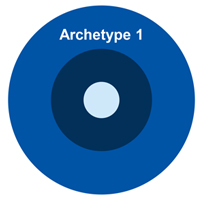
- Generates value on all three levels
- Requires existing core business
- Standard and low-risk strategy
- Example: Remote Assist by Microsoft
2. Corporate driving maximum impact on Core Business
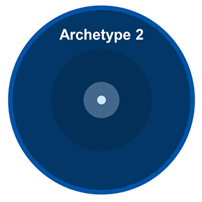
- Generates no direct impact, but strongly influences core business
- Product made available for free or not designed to bring in direct revenue
- Example: Chrome browser by Google
3. Single product startup with no core business & little revenue
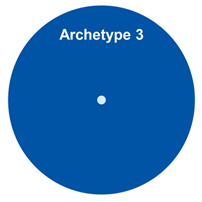
- Solely focused on goodwill
- Requires strong financial back-up
- Often managed by corporates as part of a specific strategy
- Example: Whatsapp (pre-Facebook era)
4. Bootstrap startup generating revenue & equity story
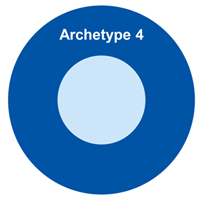
- Product is required to generate revenue as it is the only thing being sold
- Goodwill focused on equity story and brand awareness
- Example: Airbnb (early stage)
5. Opportunistic product monetizing on short term hype
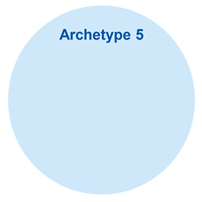
- Focus exclusively on direct revenue or cost reduction
- Satisfy temporary customer need
- A specific trend with an extremely short lifecycle
- Example: Pokemon Go
A company can use the Digital Value Canvas to take stock of its portfolio either across the entire enterprise or in a region, specific function, or business unit. The analysis generates a heat map that identifies areas of over- or under-investment, which can then enable the company to rightsize its portfolio.
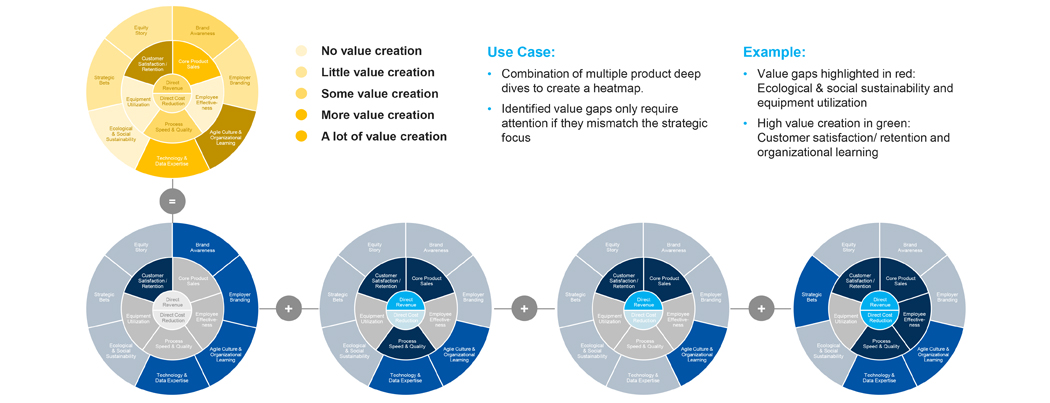
Additionally, the Digital Value Canvas helps different roles within a company to achieve different strategic benefits.
For example, for the CEO, the Digital Value Canvas enhances the overall value creation and ensures the future viability of a company portfolio.
For the Digital Product Owner, it helps them to design and communicate the value of a digital product to relevant stakeholders.
For a UX designer or IT developer, it helps them to understand what the product is trying to achieve, allowing them to design and build accordingly.
The graph below illustrates how the Digital Value Canvas can impact other roles:
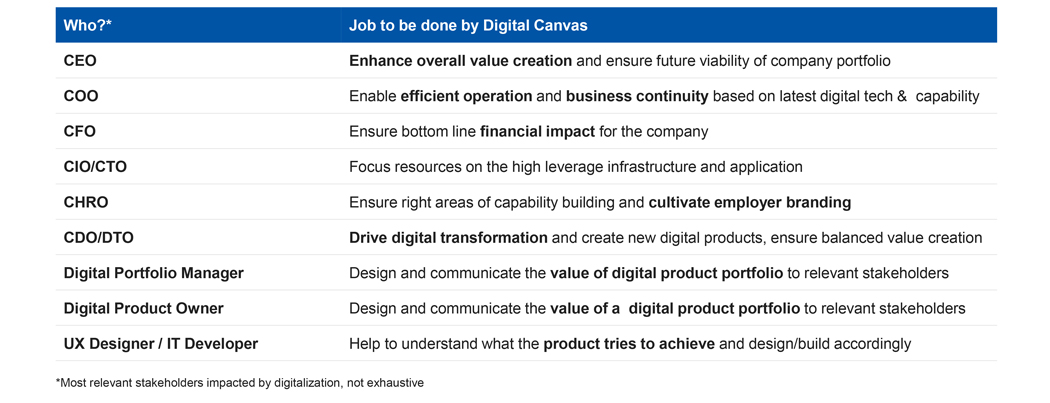
Another impactful way that a company can review its portfolio and deliver actionable insights is through the use of Value Diagnostics.
First, when implementing this system, we should think about the actual deliverables that your company wants from this process. These deliverables can vary, but your company may be seeking to gain:
- Structured review and heatmap for actual value creation of digital applications, systems, or products
- Identification of cost reduction potential
- Overall portfolio assessment, highlighting value gaps vs. desired target state
- Indication of value left on the table for the company (and clients)
- Indication of adjustment needs in respective product or service
In order to achieve these deliverables, we can then design a series of approaches, which involve input from employees at all levels in the company, and from users or experts outside the company, such as:
- Workshops that scope products for analysis
- Individual deep-dive analysis with product owners
- End-user input collection
- Validation with internal and external stakeholders
- External expert input collection
This process can be undertaken over a period of time, with the various levels of the value diagnostic mapped out in terms of portfolio level, digital product level, and external level before this review period begins.
Here is a brief example of what that process could look like over the course of two weeks:
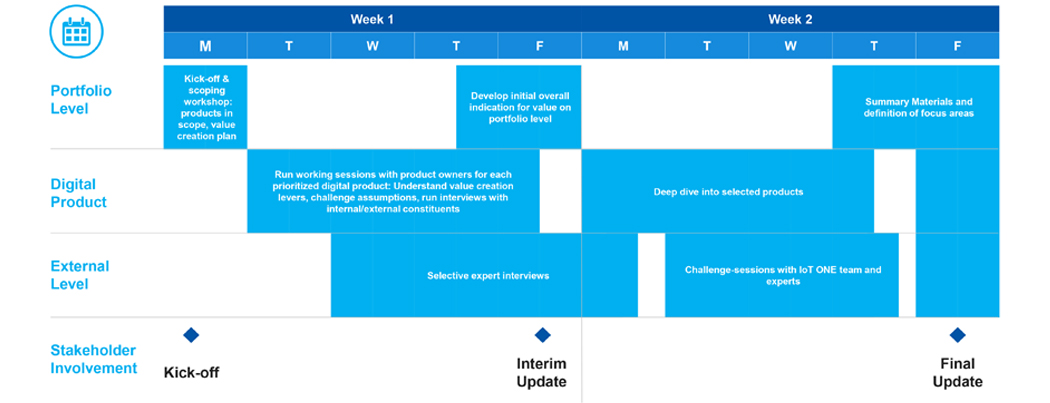
Asia Point of View
The Asia-Pacific region is a digital transformation leader in many respects, yet it is also highly heterogeneous. China is one of the most competitive digital ecosystems globally, and many corporates have ambitious digital transformation initiatives. Japan, Korea, Singapore, and Australia are all mature, high-cost countries with high digital competencies. And countries like India and Indonesia have large, underserved markets ripe for digital disruption.
The story of Xiaomi is a prime example of digital transformation in Asia. Xiaomi began life as a smartphone company without a smartphone product in 2010. Instead of bringing a “me too” phone to market, Xiaomi first developed an operating system that engaged with consumers and sought to understand what they wanted. They then launched their first smartphone in 2011. This direct engagement with consumers allowed Xiaomi to create a differentiated product at a lower price. They quickly built up a huge smartphone user base and then used this base to move into dozens of IoT categories, from TVs to air purifiers to smart lamps. This phone-plus-home synergy, combined with a streamlined design aesthetic, has allowed Xiaomi to become one of the biggest consumer IoT companies in the world, with 210 million IoT devices (excluding smartphones and laptops) across 90 countries by April 2021.
In conclusion, our goal is to build a balanced digital portfolio with high RODI that closely matches company priorities. This requires a systematic approach that is lacking in most companies. By adopting the Digital Value Canvas approach, a company can often reduce total investment while maintaining or increasing value creation by ensuring that resources are allocated to the highest value solutions.
About Excubate
Excubate is a German boutique consulting firm for digital transformation and digital innovation. Together with our clients we develop trend-setting innovations and transform their core business to stay relevant in a digitized world. For more information, visit: www.excubate.de
.png)
Related Insights.








